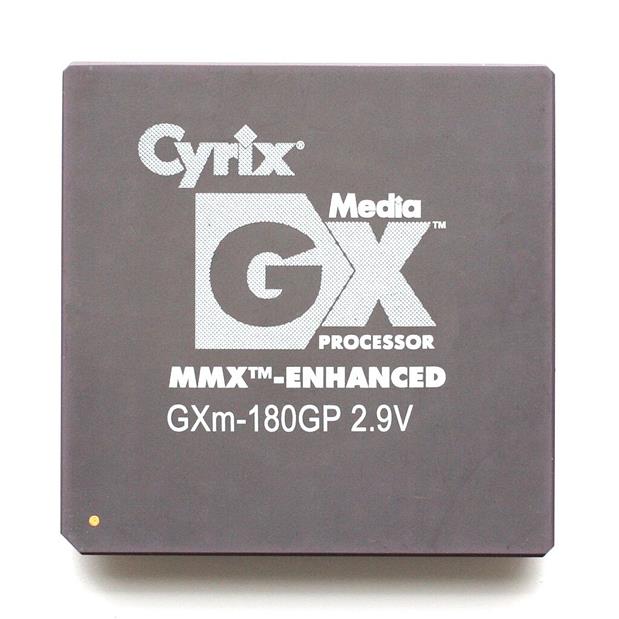Cyrix Corporation emerged in 1988 when former Texas Instruments employees founded a Texas-based challenger to Intel’s CPU dominance. Starting with math co-processors, Cyrix expanded to full CPUs with their 486 and later 6×86 lines.
Despite legal battles with Intel and manufacturing challenges, Cyrix pioneered integrated processors with their innovative MediaGX. Their aggressive pricing and technical innovation briefly disrupted the CPU market before their eventual acquisition.
The Texas underdog’s brief rise transformed computing’s competitive landscape.
The Birth of a Texas Challenger (1987-1991)
While Intel dominated the microprocessor market in the late 1980s, a small Texas upstart was quietly positioning itself as a competitor. Founded in Richardson, Texas, by former Texas Instruments employees Tom Brightman and Jerry Rogers, Cyrix Corporation began with $4 million in venture capital from Sevin Rosen.
Unlike companies listed on the stock exchange, Cyrixstarted as a fabless operation, outsourcing manufacturing to Texas Instruments while focusing on Intel-compatible math co-processors. Their Cyrix FasMath line, including the 83D87 and 83S87, quickly gained traction in the market.
The company leveraged the economic strengths of North Texas, which had become known for diversification beyond its traditional oil and gas industries.
From Math Co-Processors to Full-Fledged CPUs (1992-1994)

After establishing itself in the math co-processor market, Cyrix made its bold entry into the CPU arena in 1992 with the release of the 486SLC and 486DLC processors. These chips offered a cost-effective alternative to Intel’s 486 as pin-compatible 386 upgrades.
Cyrix quickly followed with clock-doubled 486SRx2 and 486DRx2 versions, boosting performance while maintaining affordability. In 1993, they expanded their lineup with the Cx486S, DX, and DX2 processors that competed directly with Intel’s 486SX.
What made Cyrix’s approach unique was their 5V compatibility with early 486 motherboards, providing an upgrade path that competitors couldn’t match. Despite legal challenges from Intel, Cyrix secured their right to produce x86 designs, setting the stage for their future partnership with IBM and the development of the Cyrix Cx5x series.
Their resourceful design philosophy mirrored Texas Instruments‘ early dominance in the transistor market, when TI was the only company capable of mass-producing transistors from 1954 to 1958.
The 5×86 and 6×86: Taking on Intel’s Pentium
Cyrix’s direct challenge to Intel’s dominance came in 1995 with the introduction of the Cx5x86 processor. This budget-friendly chip positioned itself as a cost-effective alternative to Intel’s Pentium 75MHz, appealing to price-conscious consumers seeking performance without the premium.
The company soon followed with its 6×86 line, including the M1, 6x86L, and 6x86MX processors. These Pentium-compatible competitors delivered impressive performance at lower price points. Despite their strengths, Cyrix designs struggled with floating-point operations, limiting their appeal for certain applications.
Intel attempted to block Cyrix through patent infringement lawsuits, but courts ultimately upheld Cyrix’s right to develop x86-compatible designs. This legal victory allowed the Texas-based challenger to continue offering alternatives in a market dominated by larger competitors, giving budget PC builders compelling options throughout the mid-1990s.
Like the Texas Rangers‘ legacy, Cyrix’s history represents a distinctly Texan spirit of challenging established powers against significant odds.
MediaGX: Pioneering the Integrated Processor

Beyond challenging Intel with direct processor competitors, the Texas-based company ventured into groundbreaking territory with its MediaGX processor in 1996. This innovative chip combined CPU, graphics, and audio functionality into a single integrated solution, targeting budget PCs and embedded systems when most competitors sold these components separately.
The MediaGX utilized Cyrix’s Cayenne core, which evolved from their 6x86MX/MII architecture. Later iterations included the MediaGXi and the Gobi processor. Cyrix’s integrated design approach represented an early vision of what would become standard in modern computing.
National Semiconductor, not AMD, acquired the MediaGX line during their 1997 merger with Cyrix. AMD later obtained the MediaGX/Geode line through its acquisition of National’s Geode division in 2003, eventually discontinuing it in 2019. Cyrix’s concept of system-on-chip design for low-cost computing had already left a lasting mark on the industry.
Legal Battles and Manufacturing Partnerships
While developing innovative processors, Cyrix found itself entangled in protracted legal warfare with Intel that drained more resources annually than the company’s initial $4 million capital.
You might be surprised to learn that despite being the underdog, Cyrix prevailed, with courts ruling its x86 architecture didn’t violate Intel’s patents. Intel later paid Cyrix $12 million to settle antitrust claims, while Cyrix countered that Intel’s newer processors infringed on its patents.
Manufacturing Cyrix chips proved equally challenging. After experiencing production difficulties with Texas Instruments, the company forged an essential alliance with IBM Microelectronics as a primary fabricator. These dual struggles—legal battles with Intel and outsourced manufacturing—ultimately limited Cyrix’s ability to keep pace as Intel rapidly advanced its Pentium architecture.
National Semiconductor Merger and Lasting Legacy
The fateful acquisition by National Semiconductor in 1997 spelled the beginning of the end for Cyrix as an independent force in the CPU wars. National struggled to integrate Cyrix’s operations, ultimately rebranding their latest processor designs under the MediaGX name for budget computers and embedded systems.
Cyrix’s DNA can still be traced through the Geode processor line, which evolved from their 6x86MX/MII architecture. This technology changed hands again when AMD purchased it in 2003, before finally discontinuing it in 2019.
Perhaps Cyrix’s most enduring impact was forcing Intel’s hand in the budget market. Their price-competitive alternatives compelled Intel to develop the Celeron line, creating an entirely new segment for affordable x86 processors—a market that continues to this day.


